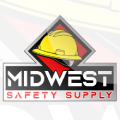Technological developments have provided factory owners with numerous tools to make accurate forecasts of industrial mishaps. Thanks to the presence of satellites, radar and data you can predict about the accidents or disasters that may take place in your factory premises. Having an emergency preparedness plan can help you to handle such situations tactfully. The first thing that you should do in this regard is to ensure the availability of industrial first aid kits.
In case of a mishap, a worker may suffer from a cut, burns or other types of injuries. Though such injuries are not life threatening, yet they do require immediate attention. Therefore, to bring the situation under control, you need to have a supply of disposable gloves, thermometer, cleansing agent and antimicrobial towelettes, burn ointment, first aid dressings and tape to prevent bleeding. The presence of other items like blood pressure monitoring equipment can also be very helpful.
There can be situations such as accidental fires, that may cause you to order your workers to leave the factory premises. Therefore, your emergency preparedness plan should include an idea as to where you will assemble the staff once an evacuation is made. Usually, it is wise to evacuate in right directions from the direction of threat. For instance, if there is a fire breakout from the west, it’s best to move towards the north. To make evacuation quick, you need to be familiar with alternate routes in the area surrounding your factory. Make it a point to take your emergency supply kit along in case one of your workers suffers injuries in the mayhem.
There may be chances of contaminants such as dust and smoke polluting the air. To provide optimum protection to your workers, use of respirators is essential to prevent the inhalation of contaminants. Some respirators are disposable and meant for single use while others can be customized by utilizing replaceable cartridges that can absorb or filter contaminants.



